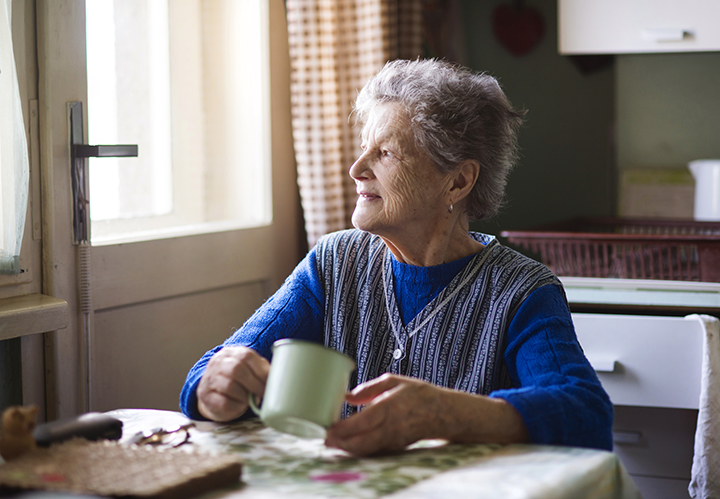
Sensing changes: Research seeks to improve early diagnosis of cognitive decline by monitoring daily activity
Maybe Dad has been eating bagels for years, but one day forgets how to cut the bagel prior to toasting and struggles to do it with a fork. Then he toasts it to burn rather than brown. Maybe grandma has had a habit of sweeping the floor every evening and returning the broom to the closet, but starts leaving the broom out or skips it altogether for days.Being forgetful or changing routines are not uncommon. But when there is a pattern, it might indicate cognitive decline long before red flags spark concern. If there were a non-intrusive way to monitor for the early, often nearly imperceptible, signs of cognitive decline, early treatment could be established to slow disease progression.
Such is the challenge undertaken by CEE professors Mario Bergés and Hae Young Noh, ECE professor Pei Zhang, and Juleen Rodakwoski, University of Pittsburgh professor in the School of Health and Rehabilitation Services. As they were having a discussion about the push to find methods for early detection of dementia and Alzheimer’s Disease, they realized that by combining their individual areas of expertise in one project they would have the opportunity to take a multi-layered approach to find a solution.
“It was clear that electricity consumption patterns could tell a story about human behavior in homes. It was equally clear that floor vibration patterns could do the same,” Bergés says of how he, Noh and Rodakwoski develop the concept for their research. “What was not clear was to what degree these two sources of information were complimentary and, more importantly, whether they could specifically track behavior that correlated with cognitive decline.”
Bergés has been researching energy disaggregation, a technique to untangle appliance-level energy usage patterns from total electricity consumption of a building. In a home setting, non-intrusive sensing technique is used to help monitor energy efficiency, with data possibly indicating that certain appliances may not be operating efficiently, for example. Noh and Zhang have been doing research with sensors that monitor vibration caused by human movement in hospital and nursing care settings to help predict falls, as well as physical and mental decline. Rodakwoski is an occupational therapist who works with people who have cognitive decline, dementia, and Alzheimer’s.
As part of the recently completed pilot project, volunteers were monitored as they moved through a script drafted by Rodakwoski in which they performed common kitchen activities. The volunteers were monitored in a lab environment designed to resemble a kitchen, with appliances such as a refrigerator and stove, as well as tools such as a broom and a vacuum.
Because many of the volunteers had no experience with some of the appliances and tools, the researchers were able to collect data from the sensors as volunteers were learning how to use the equipment which could be contrasted with data collected after they became proficient.
The goal of the pilot was to determine if researchers could properly recognize the activities of daily living from the combined data from the two different types of sensors, and use that data to discern between confusion and proficiency. Bergés says the pilot was successful.
Noh says it is important to learn how to assess activity levels, as well as the quality of activity levels, in order to see how it changes over time.
“A lot of assessments are very qualitative and subjective,” she says of how cognitive assessments are made. “To assess your level or your degradation, we need to look at your life as a whole thing, not just one time of the day when you visit the hospital.
“Elderly parents who may not be living with their kids, they may not even realize it until it becomes more severe. We wanted to do more continuous monitoring at the site, where it doesn’t interfere with their lives so much without having the expert or caregivers trying to diagnose a problem.”
The researchers wrote a paper on the pilot project and its results, which has been accepted and will be presented at the 2019 ACM BuildSys Conference, in November at Columbia University in New York. Additionally, Bergés will present the findings when he gives a keynote at the annual symposium for the Asociacíon de Laboratorios de Diagnóstico de Latinomérica (ALADIL), which will take place in the Dominican Republic this year. The latter is a health care symposium for clinical laboratories.
Ultimately, if future research proves successful in helping detect cognitive decline, it is hoped that such non-intrusive monitoring could allow for early treatment which might translate to longer independence for those with dementia or Alzheimer’s.